3 Strategies for Ensuring eCommerce Launch Success
We’d all like to believe that “If you build it, they will come,” but it’s not that simple when it comes to launching and growing a B2B eCommerce site.
Below are several opportunities to increase site traffic and customer satisfaction while building your online sales channel.
1. Tell Everyone About It
The most important first step after launching any new site is getting user adoption.
Use Influencers to Promote Your eCommerce Site
There is no better way to grow adoption than by starting from the inside. Using company influencers helps establish legitimacy for a new site especially in the early weeks and months after launch. Make sure there is an influencer from every department – sales, customer support, technical service, IT, finance and potentially engineering. These influencers should have intimate knowledge of the eCommerce functionality and the value it brings to your customers. Ultimately they should be held responsible for user adoption both internally and externally. Engage the sales team and potentially reward sales efforts to get users converting online.
Over Communicate
Your new eCommerce site should be a welcome change for customers, make sure you toot your own horn. It’s so important to make announcements both pre and post launch communicating the added benefits of using your new digital store. Do not wait for users to find you. Email your entire contact database creating a sense of excitement for the new resources and tools you’ve created to ease the process of doing business with you.
If possible, email a login and password at launch so that customers do not have to worry about registering themselves. Think about offering a launch promotion to encourage them to place their first order on your site. This has proven to be useful in taking users from visitor to conversion quickly post launch. When we are safely back to in person trade shows, plan to have a display at your booth with multiple sales people ready to demonstrate your eCommerce features. This can be a great place to get in person customer feedback and is a perfect time to make sure the sales team is comfortable using the site and speaking to the important talking points.
Analyze Users and Identify the Gaps
Over time your eCommerce analytics tools will start collecting important information about the usage of your site. A critical data point to analyze when growing user adoption is to look at who’s using your site. Are there specific customer groups naturally drawn to the eCommerce site vs others? What can you learn from this? How can this data be used to get more customers online? Then look at which customers are not placing orders on your site. Determine a strategy to communicate to this group and identify purchasing incentives that may move their preference from contacting the customer call center to making those purchases online. You may identify that there are specific product groups or details missing from your site that need to be addressed before you attract the missing customers. An analysis will guide you in taking the next right step for customer adoption.
2. Help Users Find What They Are Looking For
For many customers, the first impression is everything. It’s not just about getting customers to your site―it’s about making the experience so delightful that they keep coming back to your site. Something as simple as site navigation can determine the successfulness of your eCommerce offering. This is because when it comes to the internet, the first thing a visitor sees needs to make them want to stay. The key for selling to a niche market like specialty parts and equipment, is to make it easier for the customer to do their job.
Put yourself in the shoes of your customer. For many equipment and parts organizations, customers can be anyone from a purchasing agent to an equipment technician to a service dealer. It’s important to think about the needs of each role and ask yourself, what will they come to our site to do? Purchasing agents will use your tools differently than a dealer or technician. Recognizing the differences and building paths that help them do their job with confidence will lead to great outcomes.
Here are some specific areas post launch that are important to continually optimize in order to help users find what they are looking for:
Search
When it comes to online purchasing, having the ability to search products is practically implied. However, not all search tools are built alike. Having the ability to search by a product number, description, model, serial number, VIN, vendor number and any other unique identifier for the products you sell is important. Search should recommend products and categories based on information being entered into the search tool, even if it is partial information. It’s also a good idea to implement search functionality that includes images when images are available. In short, the more advanced your search functionality― the more likely it is that customers can take the next step to finding the information and products they need.
Product Details
When it comes to purchasing special equipment and components, the devil is really in the details. For so long equipment companies controlled product data very carefully, in a digital world it is necessary to lean in to the process of sharing data. Product information is the key to breaking down purchasing barriers and ultimately makes you easier to do business with. When thinking about the type of product information to include, remember to consider the types of questions your customers need answers to in order to make a purchasing decision. Some of their questions may be the following:
What does it look like?
Where does it fit?
How much does it weigh?
What is my price?
How many do I need?
How is it installed?
When will I get it?
Product specifications, dimensions, bills of materials and technical documents are crucial to identifying the right product for the job and ultimately providing a seamless purchasing experience. Few things are more frightening to prospective buyers than a lack of information―and if they’re not confident in their purchasing decision―your website isn’t doing its job.
Product Recommendations
Including intelligent product recommendations as part of your user experience can increase the average order value of your conversions and often give customers confidence they are making the best choice. When searching for a spare part or component, are there any additional components or hardware that should also be considered for purchase? Is there a kit available that will help make the installation easier, providing convenience and potentially a cost savinga for all products needed to do the job? Is there an alternative product available that will increase the life of the component? Customers have been trained to look for product recommendations and as such, any recommendation should be thoughtful and ultimately add confidence to the customer experience. Continually analyze product trends to make sure you are making better product recommendations as your eCommerce adoption accelerates.
Manage Product Inventory
Track your stock levels at all times, and then track it some more. Have a solid system in place for doing so, and prioritize high turning products and parts that are being searched for regularly, but not ordered. When customers need a product because a piece of equipment is out of service, product inventory (stock availability) sells! Customers need to be provided the most up-to-date information that’s available in order to make informed purchasing decisions. Real time availability of products and the shipment status and tracking information for any orders should be featured into your store. If not at first launch, work hard to get here quickly. This information will keep your customers coming back for more.
3. Optimize SEO and Promote Your Site
SEO stands for search engine optimization and defined by moz.com (an excellent resource on all things SEO) as, “the practice of increasing the quantity and quality of traffic to your website through organic search engine results.” While a successful SEO plan is specific to each website, there are several guidelines that remain true for all SEO strategies, regardless of the website. Below are several universal processes that are considered to be good practice.
On-Site SEO
There are several comprehensive factors that play into your on-site SEO strategy. Historically, it’s been considered standard practice to only focus on specific keywords, however there are several optimization factors that are non-keyword related. Start by focusing on your internal and external links. Whenever possible, you should make an attempt to link other high traffic pages of your site within one another. At the same time, it’s also important to develop content that ranks highly. Typically content that is longer ranks higher, but keep in mind that it needs to be organized and ready to be consumed. Take advantage of headings and subsections to break down longer pages into manageable content.
Keep Your Competition Close
A good first step in creating an SEO strategy that actually drives web traffic is to identify what your competition is doing that your organization isn’t. There’s no reason to over analyze here― it’s just important that you take note of key benchmarks such as content and keywords. Attempt to understand this information within context and examine what’s working for them, and more importantly, what isn’t. Utilize this information to identify gaps in competitor SEO strategies that you can capitalize on. Even after you’ve created a refined strategy, you should still conduct a competitor analysis regularly. Especially to ensure you’re getting the most out of your SEO strategy.
Build Links (and lots of them)
To increase the effectiveness of your SEO strategy, it’s important that your organization is building backlinks and promoting your website. Contact other high-traffic websites within your organizations arena to learn more about their outreach, sponsorship, and advertisement opportunities. Once again, there’s no reason to over complicate this process. You can even look for blogs that allow promotional guest posting to boost your sites web presence. Just like a competitor analysis, it’s important for site owners to consistently search for new opportunities to build links and boost exposure.
Specials and Promotions
One of the first things that a visitor should see when they visit your website is a section displaying your current promotional offerings, news about new product upgrades, or information on how to schedule on-site technical support. Presentation counts for everything in the digital space, and your site should be representative of your business. Building subtle banners that ease your visitors into checking out your available sales and promotions is a good place to get their site navigation journey started.
Don’t Just Build It―Grow it
There are many ways to build an eCommerce site, but there’s only one way to manage it. The right way. Three common reasons we see eCommerce sites fail are: not enough early user adoption, lack of optimization to help ease the customer buying process, or not enough site promotion post launch. Your eCommerce site will become the face of your brand. To overcome the early obstacles of selling online, it’s important to understand your gaps in these three areas. Your brand’s value should align with customers’ values, but that’s only a portion of the battle. In order to be successful, your website will need to build on buyer expectations and anticipate their needs. Your website offers the products that buyers want. However, that doesn’t mean your job is finished―don’t just build it, grow it.
A Special Thanks to Kris Harrington, President of GenAlpha for this Fantastic Guest post
Related Articles:










Leave a Reply
Want to join the discussion?Feel free to contribute!